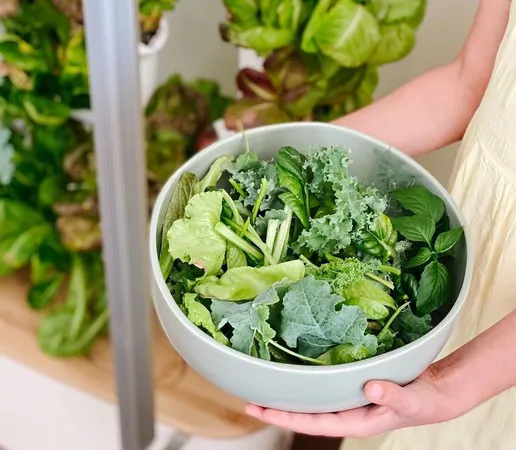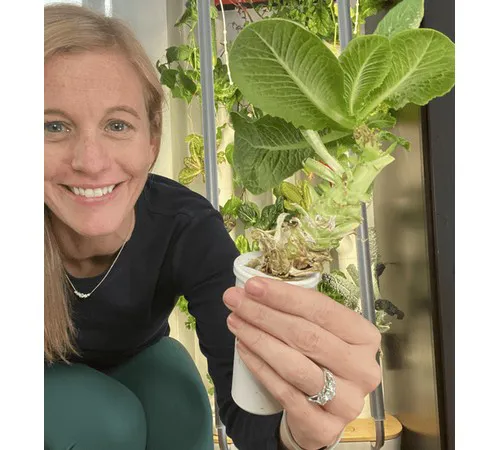The plant looks at it’s peak and there are enough green leaves for the big salad you’re about to make for dinner. Scissors in hand, you cut the base of the plant, bringing it over to the sink to snip off the leaves for eating. You have a bright beautiful salad, ready for dinner. You remove the (now empty) yCube. It’s the end of the cycle for that plant, right?
Actually, it’s just the beginning. Most plants (as traditional vegetable gardners will know), produce enough food for continual harvests for up to 3 months! This is how our grandparents (and those before them), gardened. Caring for the same plant and letting it live out its full life while reaping the rewards of repeated harvests. Less waste, more bounty.

The way you harvest determines if your plant will keep producing. Instead of cutting off the whole plant or cutting off the stalk clip away at the larger, outer leaves at a point close to the base. Make sure to leave some leaves in the middle to keep the plant producing. The same goes for herbs, fruiting plants, and flowers.
Take basil for example. When harvesting basil (and similar plants such as sage and oregano), look for the largest leaves on a stem. Cut below them and above the smaller leaves. Now, these small leaves will grow into larger ones, and the process gets repeated with each harvest.
For fruiting plants, such as cherry tomatoes, peppers, and gooseberries, harvest is pretty straightforward. Simply pluck the tomatoes, peppers, etc. off of the plant. To keep it producing, prune small stems to send all food and energy to the larger stems.

When it comes to flowers (and similar plants), cutting back dead or fading flower heads will encourage more growth (and more flowers!).
In general, cutting off any dead or fading parts will encourage all of your plants to be happy, healthy, and bountiful for weeks and months. Though these general rules apply to most plants, some may differ. To look up care for a specific plant, you can find all of our plant care guides here. Get ready to grow, eat, and repeat.
For more information:
Gardyn
www.mygardyn.com
